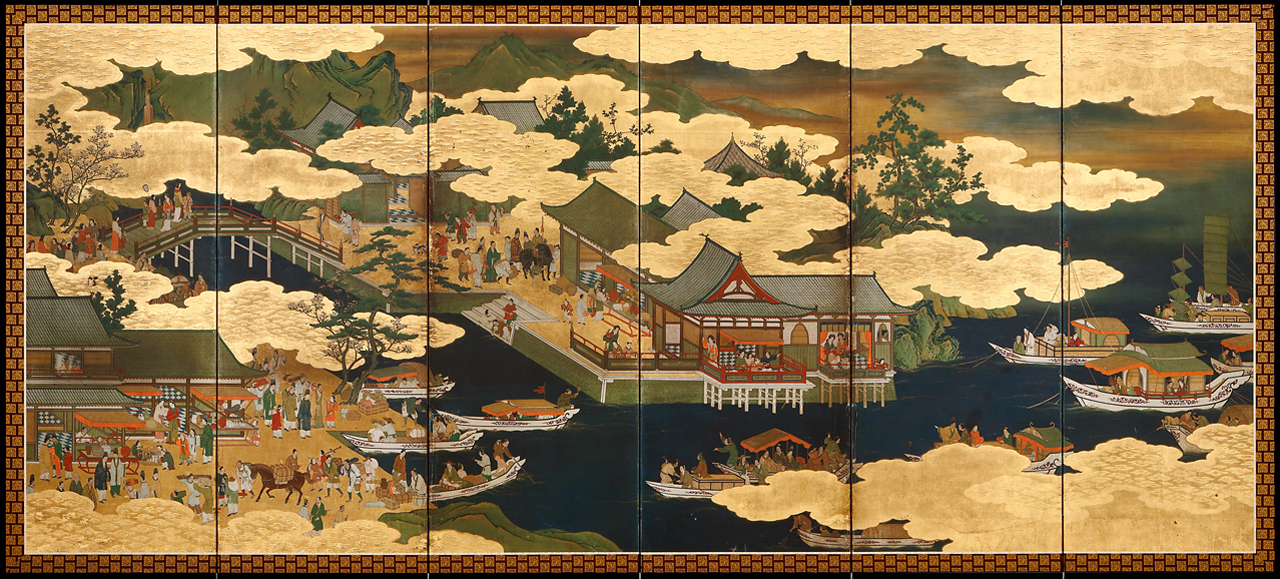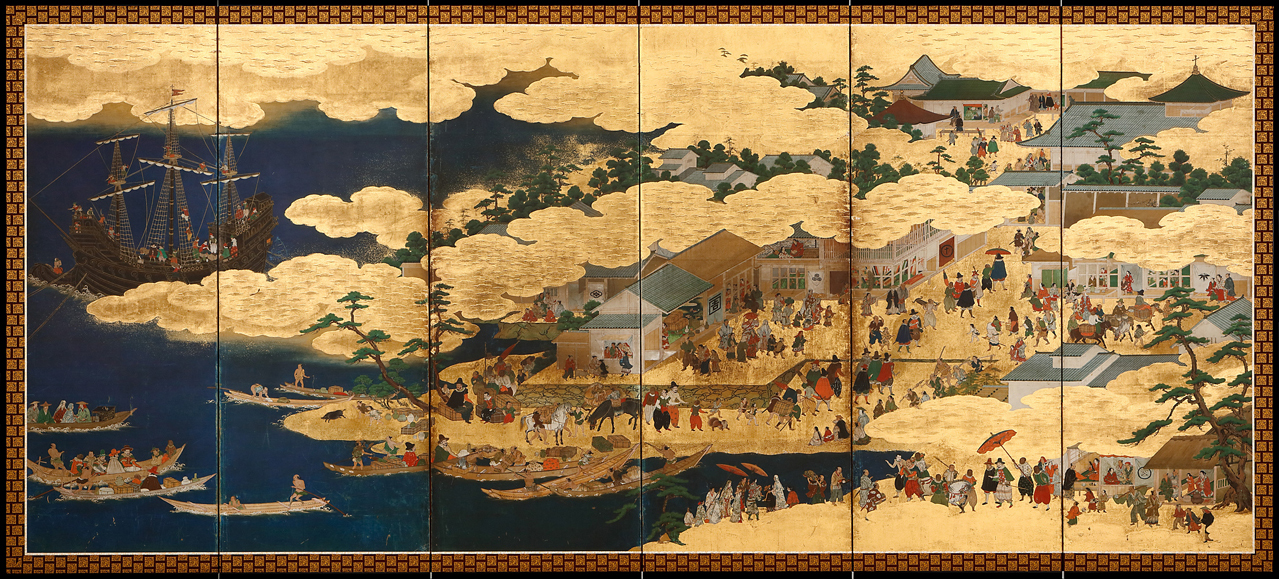Namban Ships and Chinese Junks
DATA
- Artist:
- Kano Takanobu
- Historical era:
- Azuchi-Momoyama-Edo (17th century)
- Material:
- printed, gold on washi paper
- Medium:
- pair of six-fold screens
- Theme:
- High Resolution Facsimile of Historical Cultural Assets
- Size:
- Each screen H158.5 × W362.6 cm
- Recipient:
- National Institutes for Cultural HeritageMAP
[Original]
- Current owner:
- Kyushu National Museum
- Material:
- ink, color, and gold on washi paper
DESCRIPTION
More than ninety sets of folding screens depicting scenes of commerce with the Portuguese and other “Southern Barbarians” (Namban) who visited Japan in the Momoyama period and the early Edo Period have been identified in Japan and abroad. This work is unusual among them because the left screen shows a port in China. It is thus of great value in that it is rooted in an earlier artistic tradition of depicting trade between Japan and China. Both screens portray the characters, the ships’ cargos, and the other subject matter in great detail and variety, suggesting the hustle and bustle of a contemporary Japanese or Chinese port town. Although not signed or sealed, the painting can for stylistic reasons be attributed to Kano Takanobu (1571-1618), the second son of Kano Eitoku.


